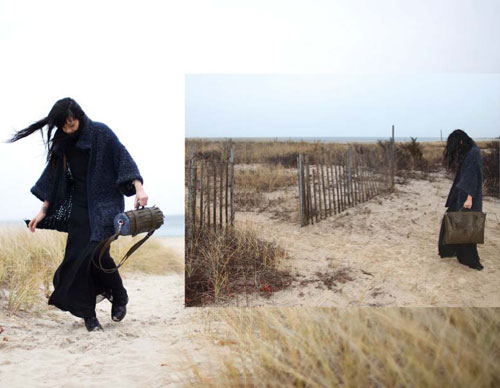Merging old fishing nets with new technology, Spanish brand Ecoalf has developed a brand that recycles what would be landfill and turns it into refined modern day products. Founder Javier Goyeneche tells us how important it is to be persistent while branching out from the norm.
What inspired you to start ECOALF?
I believe that natural resources are not endless and that recycling can be a very good option. Why not try to create recycled products with the aspect and technical properties of the best non-recycled products?
New technology has been your key to creating a sustainable product, how did you come up with the idea of using fishing nets?
We discovered that in many ports there was a lot of discarded nylon fishing nets. Where people find waste, ECOALF finds raw materials!
Has it been difficult starting a company with a strong emphasis on recycling?
It hasn´t been easy as we have had to invest a lot in R&D. The beginning has been slower than we expected. We have had to convince many manufacturers to develop new recycled products with us like laces, linings, labels etc while maintaining the same quality as the non-recycled ones.
How do you develop new products?
We spend a lot of time and resources developing new recycled fabrics, the final look of the end product, the tactile aspect, the technical aspects, and finally, it becomes part of our new collection.
When designing one of your bags, what do you have in mind? How do you start the creative process?
We believe that in order to develop a sustainable product it all starts with the design. Once we have a clear idea of the fabrics and materials that we can use we start designing under the ECOALF life style concept.
We try to design urban, functional, timeless products with the best quality.
Our aim is to prove that a recycled product can be as cool, good looking and technical as a non-recycled.
Can you explain a bit more about what Authenticity means to you?
Authenticity for us is important, our goal is to have 100% recycled products but for the moment that is not possible. We work hard making joint ventures with lots of suppliers to develop all the different components for recycling. ECOALF is not green washing, we believe in what we do and we work hard to make those values be real and authentic.
Where are you based? Does your location effect you/inspire you?
We are based in Madrid, Spain, but we are always ready to travel anywhere in the world to find new materials that we could recycle and turn into one of our products!
What do you hope for the future of fashion?
We have to realize that our natural resources are in great danger; our company thrives to investigate the use of recycling to create fashionable, commercial and successful products that are at the same level as non-recycled products.
You can find out more about Ecoalf here where you can watch how they actually recycle nets and bottles.
Read more...



















































